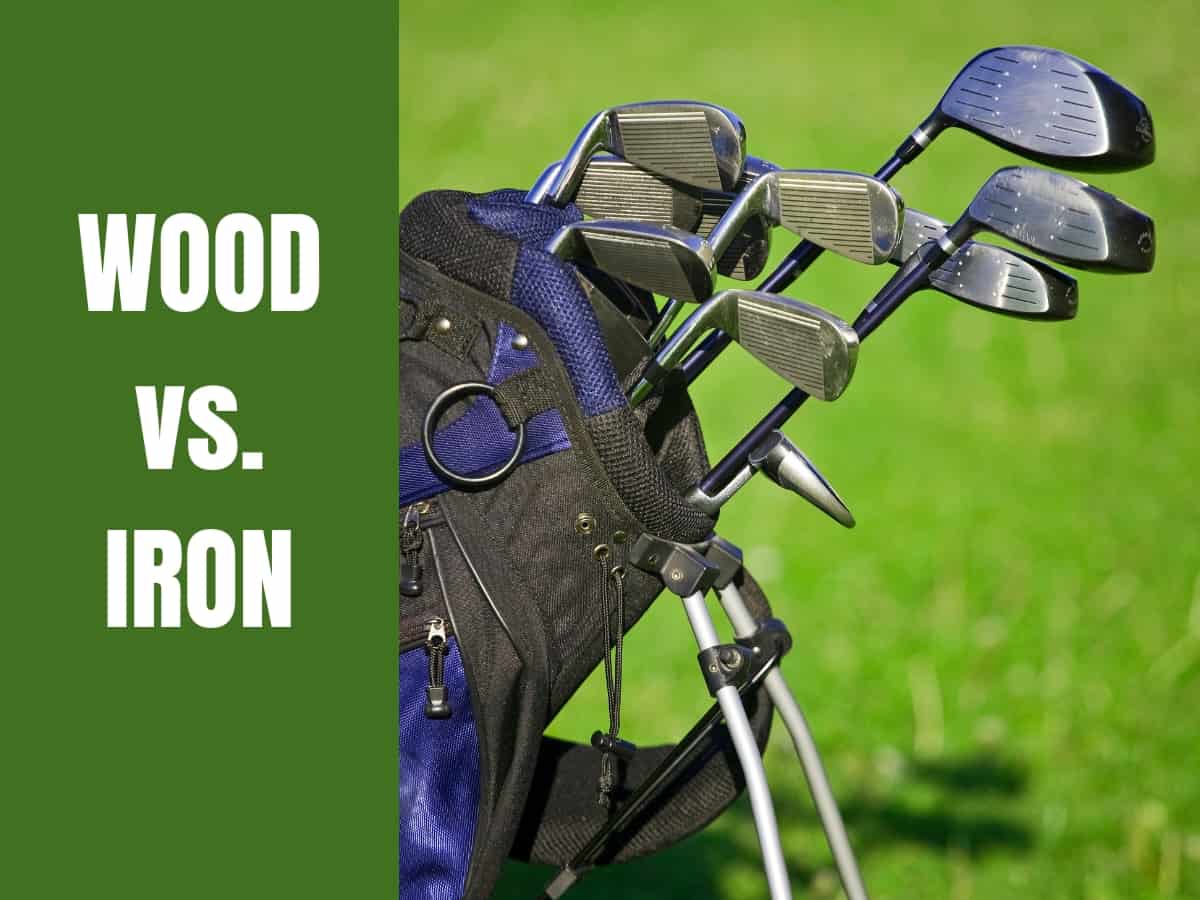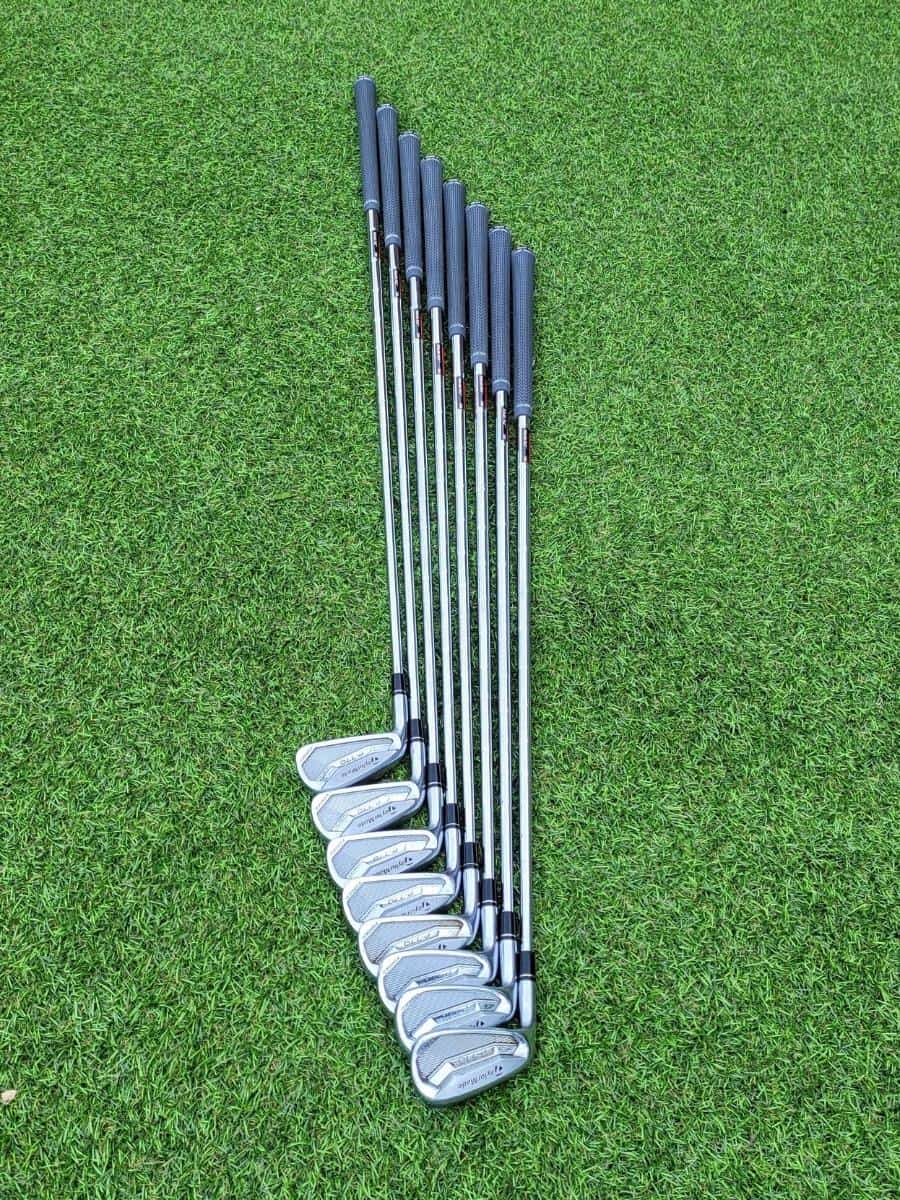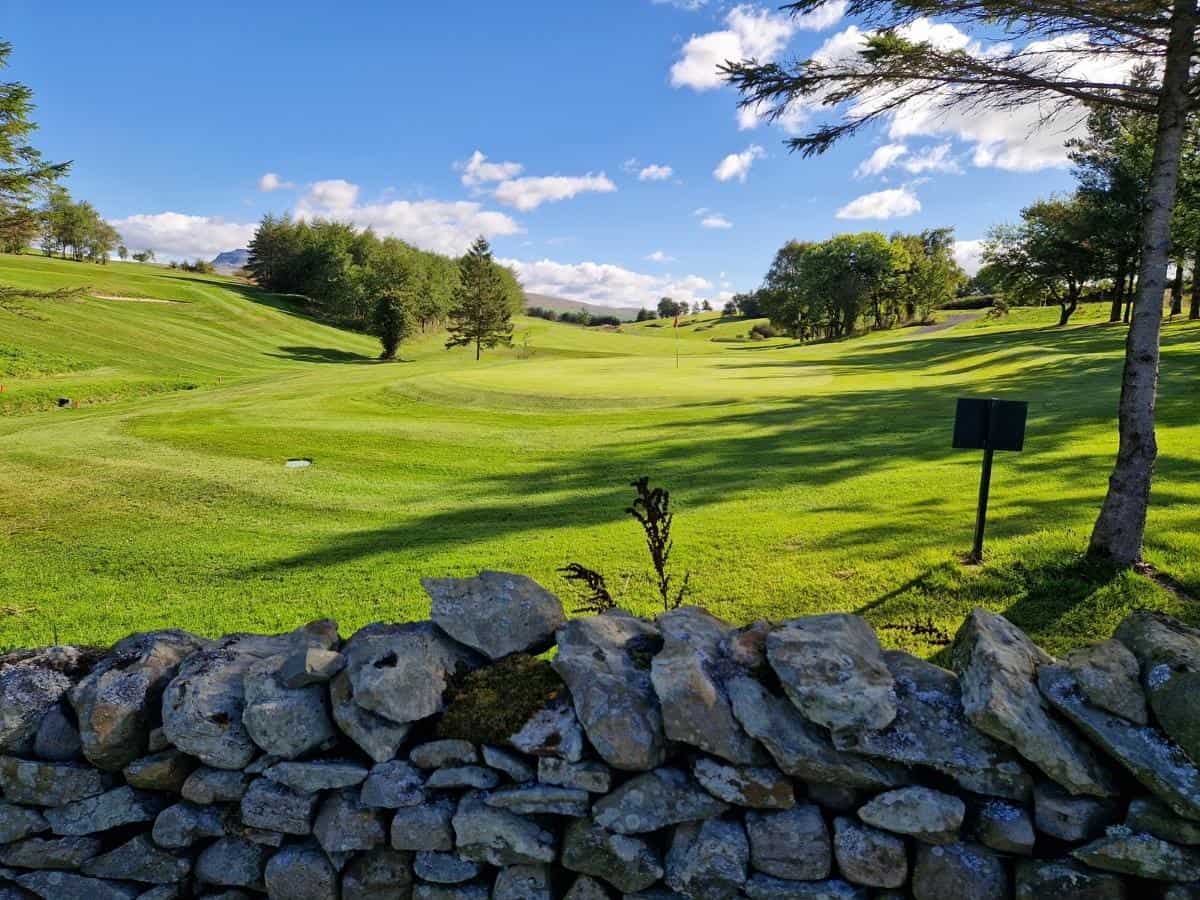Wood vs. Iron: What’s The Difference?
Although wood and iron golf clubs share the same golf bag, each has unique designs and uses. It’s essential to know the differences between the iron and wood clubs as this will help you understand how they each perform on the golf course. So, what is the difference between a wood and an iron?
For accuracy, irons are best, and for distance, woods are better. Although they usually don’t travel as far as wood strokes, iron shots are simpler to hit with accuracy. Because they typically have longer shafts and lesser loft faces than irons, woods strike the ball further but are more challenging.
As a beginner, knowing the differences between wood and iron golf clubs can go a long way in helping you realize which is needed and when so you can better your performance. Here is what to know about woods vs. irons regarding appearance differences, ease of use, and how they can change your swing.

Difference Between A Wood And An Iron
There are some significant differences between woods and irons. In fact, they are so significant that some golfers opt to just hit with one or the other and end up compromising accuracy for distance and vice versa.
Wood vs. Iron
A wood club was manufactured of wood with a metal face for many years. They are now manufactured of metals or carbon but have retained the name ‘wood.’ They have a big club head in relation to the striking area. The swing gains more power due to the added weight, but accuracy and control are sacrificed.
Always constructed of metal are iron golf clubs. Irons feature faces with a wide range of angles that can strike the ball more vertically than horizontally, in contrast to woods, which have a face that is practically perpendicular to the ground.
Woods are utilized for roll and distance. They only have enough loft to lift the golf ball off the ground, not much more. The ball travels a great distance before hitting the ground and continuing to roll.
Although a wood has a longer shaft and will propel the ball farther, it is slightly more challenging to make contact with the ball throughout the swing.
For example, a 5-wood and a 4-iron will propel the ball at similar distances through the air. But if you need to clear hazards such as bushes and trees, the 4-iron would be the club of choice. Its loft allows you the height required. But on impact with the ground, the greater loft will decrease the ball’s forward roll.


Accuracy is achieved using irons. They are simpler to control and lift the ball higher into the air. When hitting for the green, you want the ball to bite where it lands rather than roll away from it.
Furthermore, hitting long irons is significantly more challenging for most amateur golfers than hitting metal woods since they often have slower swing speeds and worse swing trajectories.
See also: Types of Golf Irons (Defining What’s Right For You)
The spin that the ball and clubface impart upon contact is crucial. The amount of backspin, or spin specific to the ground, affects how high the ball flies. The more there is backspin, the higher the ball flight. The loft of the irons’ club faces is intended to produce a backspin that raises the ball’s trajectory, and the higher the loft, the more backspin will be produced.
Ball flight exhibits a sideways curvature when the spin is slightly off vertical or sidespin.
Metal woods are, in general, easier to hit off a tee or off the grass.
Difference In The Swing Of Woods vs. Iron Clubs
With a wood, you swing into the ball with a sweeping action, which is a straightforward distinction. With irons, the clubface continues to make contact with the surface in front of the golf ball after it is struck, resulting in a more descending hit to the ball’s center.
For most golfers, the swing is the same, and the shortened shaft length enables irons to have a more descended arc. With an iron, the player stands much closer to the ball. The ball is shifted somewhat back in the stance.
The swing is more tilted towards the ground and not quite upright, and the swing is shorter with an emphasis on accuracy rather than distance. The difference with wood clubs is that golfers stand a little further from the ball, and the body is more on the upright side.
The stance is typically smaller, and the ball is slightly to the middle of the feet when using an iron club. Whereas with woods, the stance is wider, creating more room for a bigger swing.
The ball is also placed more to the inside of the front foot. As you can see, there are different centers and angles to the ball when using woods versus irons.
Below is a photo of the challenging 16th hole at Bentham Golf Club, North Yorkshire, UK. My usual approach to this green is a 3-wood from the tee and a 4-iron from the fairway, which provides me with loft to clear the stream running in front of the green and allows the ball to stop on the green.

Is The Wood Or Iron Golf Club Easier To Use?
Since they tend to have the shortest shafts, the higher-lofted woods are the easiest to hit. A 3-4 iron will be more difficult to hit off the deck than a 7 wood. The short irons are the second simplest to hit. They are the simplest to manage and swing because of higher lofts plus shorter shafts.
The following are the benefits of a contemporary wood over an iron:
- There is a larger surface area.
- Woods have weighting to increase ball flight.
- So long as the swing is reasonable, the sole of the wood club will stop it from making a divot in the grass, so there is a bigger margin for error.
- Additionally, a player can swing steeply or shallowly and achieve a respectable result in terms of distance while using a higher lofted wood.
Final Thoughts
Both have their uses when evaluating the difference between a wood and an iron. When aiming for accuracy over distance, irons are the way to go. However, when looking for distance, woods triumph over irons. Essentially, it is up to you to use a club that will assist you in connecting with the golf ball the best.
Related Posts You May Like:






